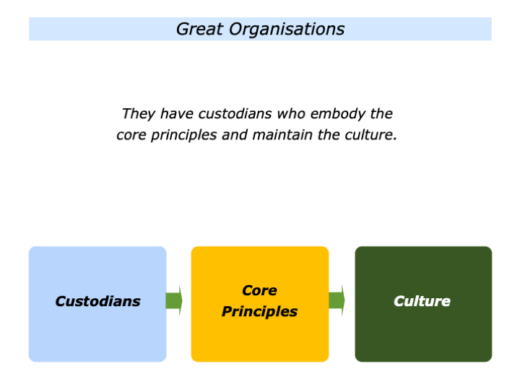
Great organisations have people who act as custodians of the culture. The leaders act as positive models. They also have many other key people, however, who embody the organisation’s core principles. These cultural custodians act as good models and protect the culture during times of difficulty.
One soccer manager, for example, shifted a club’s culture by signing positive leaders. These players had credibility and demonstrated the professional standards required to achieve success. The other players could choose whether or not to up their game. Some did, but others moved on.
Looking at your own work, imagine that you lead your present team or organisation. Who are the people who act as custodians of the core principles the team needs to follow? What do they do, in behavioural terms, to demonstrate these principles?
If you wish, try tackling the exercise on this theme. This invites you to do the following things.
Describe the specific people who act as cultural custodians in your team or organisation. Write their names.
Describe the specific things they do to act as cultural custodians for the team or organisation.
Imagine that you have been invited to lead an organisation. You will have made clear contracts with your key stakeholders – such as your bosses – about the following things.
The specific results to deliver – the organisation’s picture of success.
The specific principles the organisation will follow to achieve the picture of success.
The specific things you will do to proactively keep the stakeholders informed about the progress towards achieving the picture of success.
The specific support you will require to achieve the picture of success.
The specific early wins you will deliver on the way towards achieving the picture of success.
Good leaders then create a positive culture in which motivated people can achieve peak performance. There are many ways to make this happen.
One approach is to start by explaining the organisation’s strategy to people. It is then build on the people who want to contribute towards achieving the picture of success.
Imagine that you are addressing everybody in an organisation. You might say something along the following lines to explain the way forward.
Welcome To Today’s Session.
I am going to give an overview of our organisation’s purpose and the part you can play in making this happen.
The Purpose
The purpose of our organisation is:
* To
The picture of success – the specific things that
the organisation wants to achieve by a certain
date – that will be an expression of the purpose are:
* To
* To
* To
The positive benefits for all the various
stakeholders of achieving these things will be:
* To
* To
* To
The Principles
The key principles we aim to follow to achieve this purpose
– together with the reasons for following these guidelines – are:
* To
* To
* To
The Practice
The way you practice these principles will – within parameters – be up to you in your part of the organisation.
But there is key point. You must show how what you practice supports the principles and contributes toward achieving the purpose.
You can then invite people to reflect and decide if they want to follow the core principles. If so, they can then make clear contracts about how they wish to contribute towards achieving the picture of success.
How to maintain the momentum? There are many ways to encourage people to keep following the core principles. These may include some of the following.
Create opportunities for people to
update others about their progress
One approach is to create opportunities for people to report on their progress. You can, for example, invite each team within the organisation to make monthly presentations on the following themes.
Progress Report
The specific things we have delivered in the past
month towards achieving the goals have been:
*
*
*
The specific things we aim to deliver in the
next month towards achieving the goals are:
*
*
*
The specific challenges we face and the
support we would like to achieve the goals are:
*
*
*
Publicise success stories
You can publicise success stories that show how people have followed the principles and contributed towards achieving the picture of success. These stories show what good looks like and encourage others to deliver these professional standards.
Support the potential
custodians of the culture
Good leaders act as positive models. They often need help, however, to build and maintain the desired culture. Bearing this in mind, they identify people who already embody the principles required to reach the goals.
Willi Railo, the Norwegian sports psychologist, used another name for athletes who played this role in shaping a team’s culture. He called them cultural architects. Looking at sports teams around the world, he named David Beckham as such a person.
Cultural architects have a strong influence on other athletes in teams, said Willi. They have self-confidence and transmit this confidence to others. Such architects are powerful. So it is important that they align their efforts to help the team achieve its goals.
Imagine that you lead an organisation. You can identify the people who embody the principles that the organisation can follow to achieve success. It can then be useful:
To encourage them to act as positive models for others in the organisation;
To involve them in helping to implement the desired culture in the organisation;
To help them to build on their strengths and make their best contributions to the organisation.
This is an approach I took early in my career when running a therapeutic community for young people. There were two staff members and 20 residents. So it made sense to give positive roles to some of the young people. This involved encouraging them:
To develop as people by taking on increasing levels of responsibility in running the community;
To act as hosts to visiting social workers and explain the community’s approach to helping young people;
To be guest speakers at conferences for social workers – plus speak on radio and TV – to explain the community’s approach.
Thirty years after leaving the community I got an email from one of the young people who played such a role. Sue came to us at the age of 14, having spent much of her life in institutions.
She was now a Grandma. Looking back at her time in the community, she gave an insight into how the young people helped each other to tackle challenges. She wrote:
The community made us feel safe and we never betrayed that trust. We saw it a last chance and we did not want to mess it up.
Sometimes we acted to protect the community. For example, some newcomers tried to bring drugs into the house but we said:
‘Don’t bring that stuff here. If you want to take drugs, leave the community.’
Sometimes we had fantastic talks. There would be 8 of us sitting in a bedroom till midnight, just sharing thoughts we had never discussed with anybody before.
Every young person in the community had suffered problems. We encouraged each other to talk about the past, but didn’t allow each other to use it as an excuse for behaving badly.
If I said, ‘My mother left me in the park when I was two,’ somebody else said: ‘I can top that. How can you use that bad experience to help others in the future?’
Suddenly I realised that I didn’t have to go on the path I was hurtling along, which would probably have led to drugs or prison.
The people in the community believed in us and my feelings mattered. Someone listened when I was screaming. What could be more wonderful than that?
Nowadays I try to help other people by volunteering to work at the local hospice. But the thing I am most proud of is being a good parent to my children.
Imagine that you lead your team or organisation. How can you build on the custodians of the culture? How can you, if necessary, add to the group by bringing in other people who can play this role?
How can you then support these people? You may want to encourage them to be positive models, involve them in shaping the culture or enable them to use their strengths to help the team or organisation to achieve success.
If you wish, try tackling the exercise on this theme. This invites you to do the following things.
Describe the specific things you can do to encourage or, if appropriate, add to the people who act as cultural custodians in your team or organisation.
Describe the specific benefits of encouraging or adding to the people who act as cultural custodians.


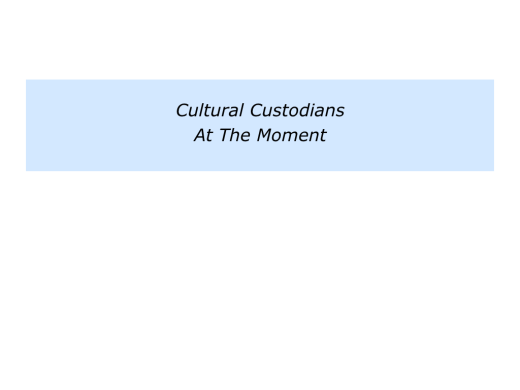
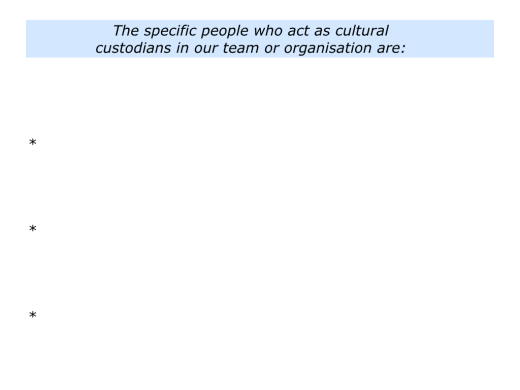
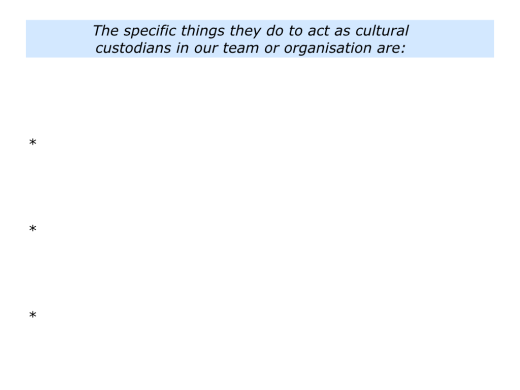
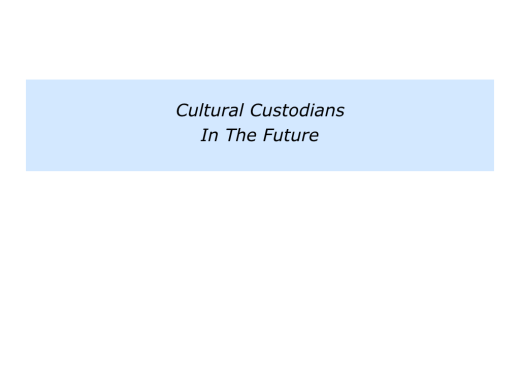
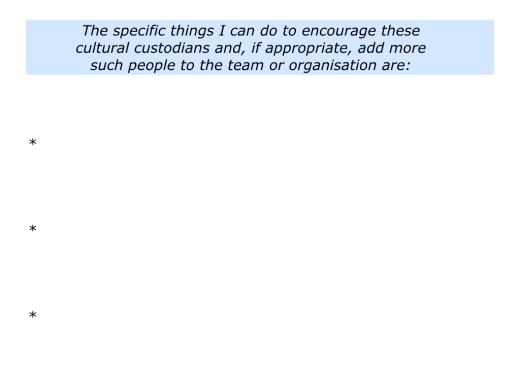




Leave a Reply